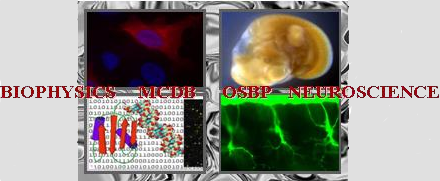Poster abstracts
Poster number 35 submitted by Anna H. N. Griffis
Medicago truncatula LINC complexes and their potential role in root symbioses
Anna Hare Newman Griffis (Graduate Program in Molecular, Cellular and Developmental Biology, The Ohio State University), Katherine Beigel (Department of Molecular Genetics, The Ohio State University), Iris Meier (Department of Molecular Genetics, The Ohio State University)
Abstract:
Several vital crop plants’ productivity depends on root symbionts that provide the plants with nitrogen, phosphorus, and other nutrients. One of the most important events in the establishment of symbiosis is the initiation of interactions between plant roots and soil-dwelling microbes, including rhizobia and arbuscular mycorrhizal fungi. The role of nuclear migration in these processes has long been implied, but never definitively established. Recently, LINC complexes have been shown to be components of metazoan nuclear movement machinery. These complexes are made up of the inner nuclear membrane SUN proteins and outer nuclear membrane KASH proteins. While SUN proteins are widely conserved, no animal KASH protein homologs exist in plants. Working in the model plant Arabidopsis thaliana, our lab recently discovered the first plant KASH proteins, which are involved in processes ranging from nuclear movement in root hairs and pollen tubes to oomycete defense. However, Arabidopsis is a host to neither rhizobia nor arbuscular mycorrhizal fungi. Therefore, to study the role of LINC complexes in nuclear movement during the establishment of root-symbiont interactions, we have adopted a reverse genetics approach in the model legume Medicago truncatula. We have identified 12 genes that encode putative Medicago LINC complex components via bioinformatic tools. Here, we will show subcellular localization data for these LINC complex candidates from transient expression assays in Nicotiana benthamiana. Further candidate validation by co-immunoprecipitation with appropriate putative binding partners from Arabidopsis and Medicago (i.e. SUN-KASH interactions) will also be presented. Tnt1 retrotransposon insertion mutant lines have been obtained for 8 of the 12 putative LINC complex component genes. Results from phenotypic analyses performed on homozygous mutant lines, focusing on potential symbiosis and/or nuclear movement defects, will also be shown.
Keywords: plant-microbe interactions, cell biology, nuclear movement
